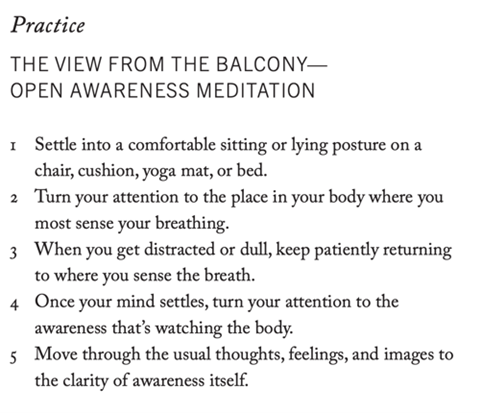My podcast with Joe Loizzo and Elazar Aslan about their book Boundless Leadership is out now at the New Books Network. Together, they combine two really important areas of expertise. Joe is a psychotherapist, researcher, and Buddhist scholar, whilst Elazar is a former C-suite executive and now an executive coach. Their mission in Boundless Leadership is to help people unleash and take control of their full potential: it is an elegant, instructional, and at times motivational, guide for those seeking to evolve from their constrained ‘survival’ mode to leverage the beautiful, intense, ‘thriving’ mode that every individual has at their core.
Leadership books that are actually good are quite hard to come by. I think Boundless Leadership is nonetheless one of those rare books, and I want to reflect more on what survival mode and thriving mode look like, and how we can get from one to the other.
So, survival mode. The connotation speaks for itself, but Joe and Elazar argue that this is the mindset we find ourselves in by default. Those familiar ideas of doing our best, perhaps even achieving our goals, but remaining nonetheless unfulfilled. The feeling of ‘if I just do a little bit more, get that promotion, reach that target … I’ll be happy’. And then we get there, and want to keep pushing for more. In our podcast I recalled one example of a CEO of a big finance company I had spoken with recently: he’s got a big role, responsible for processing and making billions of dollars - and not doing too bad himself; but he spoke of his unfulfillment, how he still wanted more, and how his personal pursuit of contentment wrestled with his desire for success relative to his peers.
By default, we’re in this survival mode in which we, as humans, are driven by stress-related triggers. This is our conditioned, evolutionary, way of being, and it entails a negativity bias in our brains: we perceive scarcity, a emote in ourselves a harsh inner critic, we embody a defensive stance that has us constantly on the lookout for our next meal, our next achievement; we stress out. It’s useful to be reminded of the big picture, that, as Tim Urban puts it, “we’re a bunch of primates in a totally unnatural environment, trying our best”; our way of life is so very new and foreign to our evolutionary condition.


But new it is, and better too. And it’s time we think about how we can develop our brain to better suit it. Joe introduces the concept of neuroplasticity, an idea underpinned by a significant volume of research, that the brain grows us an outcome of how we use it; we can alter the biases of our brain to develop our survival mode and access our thriving mode.
The purpose of the book is to help people do just that. It’s based on the premise that “our full potential is most accessible when our mind, heart, and body are each optimised and functioning as one integrated whole”. The survival mode is when we’re less worried about our destination and more focused on enjoying the journey; it’s about us aligning and training our mind, heart, and body; about how our mind perceives scarcity, how our heart moderates our inner critic, whether we embody fearlessness or fear.
The thesis that Joe and Elazar offer is that through repeated meditative practice, we can achieve discipline and alignment across mind, heart, and body. In our mind, we can pursue self-awareness and develop clarity; through our heart, pursuing authentic engagement to develop our compassion; and through our body, developing fearlessness. This is a triumvirate that has clear echoes of Freudian and Jungian psychology, which I have also placed at the core of how I conceive of leadership.
These are a lot of fuzzy words thrown together though, but the big picture that they are intended to paint is that through meditation, we can develop clarity of thinking and compassion for ourselves and others. This mitigates our scarcity mindset and harsh inner critic, and with this, we can develop to access and control what Elazar calls the “animalistic” core within our body; this is what inspires us and makes us fearless. This is the feeling we have when we are inspired by purpose and embody an inner confidence; in this context, ‘body’ is less of a physical object, and more a lived, expressed experience, and feelings of fearlessness or purpose have depth in the body; the body is “the source of the potent forces that drive us”.
In an abstract sense, this is a very ambitious book. I think the blend of psychology, meditation, and lived experience provides a broad and plausible framework – and one worth reflecting on further.




